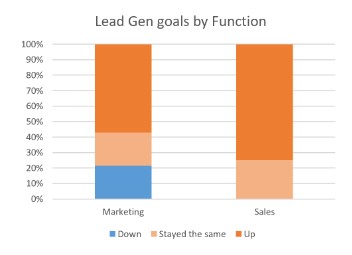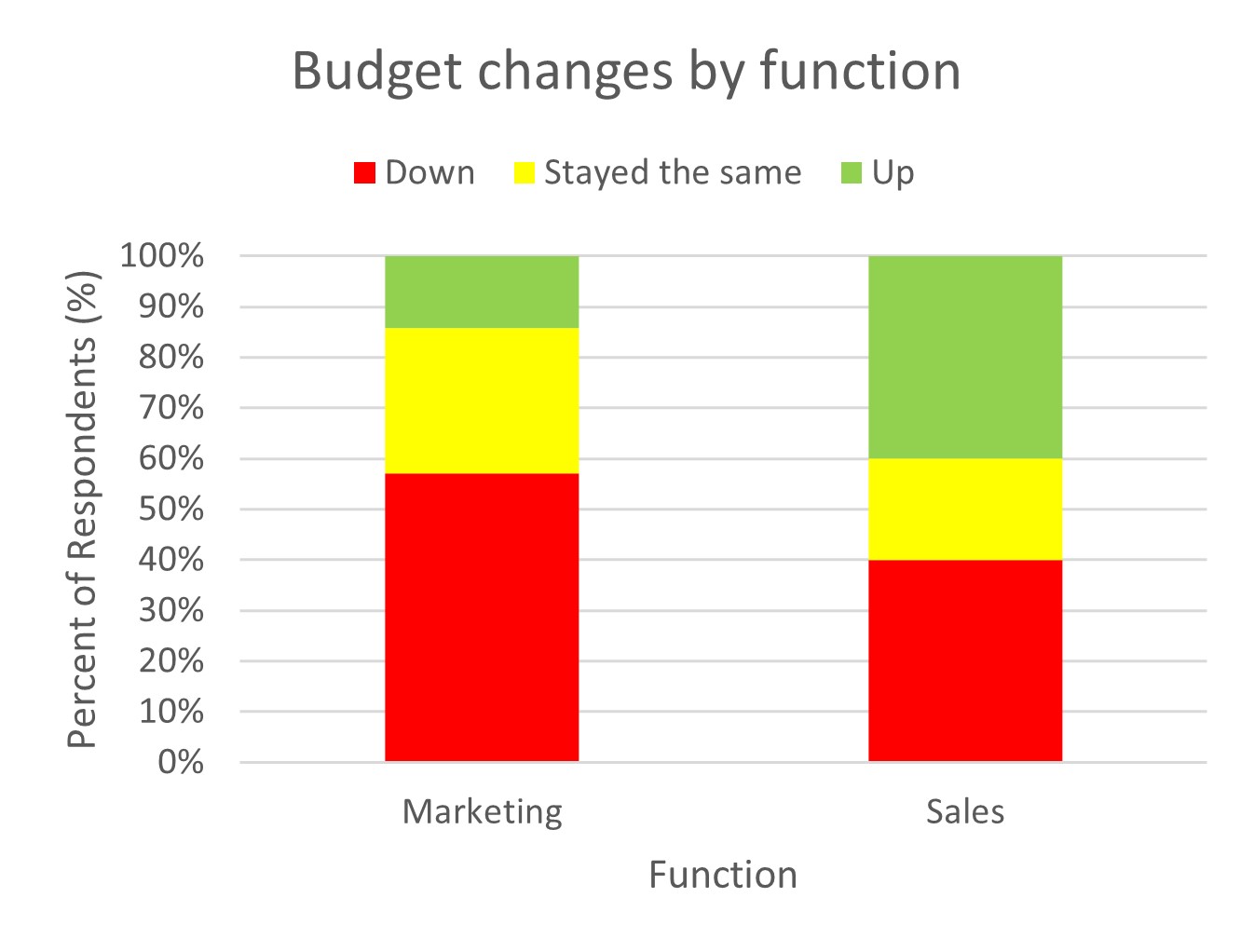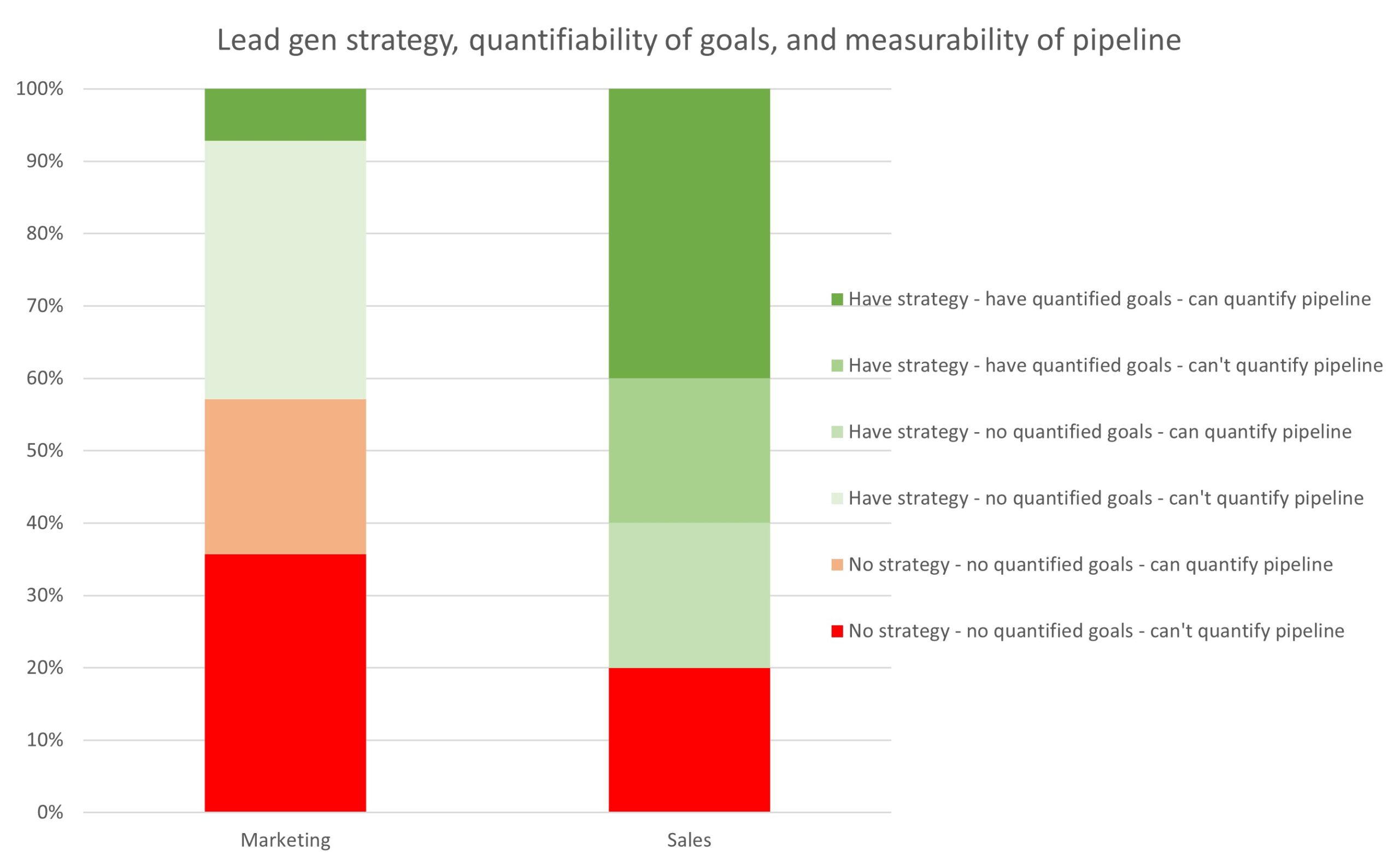The Perfect Storm Facing Post-Pandemic B2B Marketing Teams
For B2B marketers in 2021, a new mandate has become clear: Evolve or perish. As marketing leaders steer their ships through the turbulence of COVID-19, they’re encountering the sobering reality that there will be no return to business as usual, even after they get to calmer waters. Marketing teams may make it to the other side of this thing, but the old ways of B2B marketing aren’t coming with them – and emerging evidence shows that many teams are ill-equipped to adapt to the new environment they’re entering.
The good news: It’s perfectly possible not just to survive, but to thrive in this new environment. But it will require teams to take a step back, re-align the resources still available to them, up-level their digital skills, and make a detailed, if not quantified, growth plan.
Why has this happened, and what, exactly, has changed?
Success in the new era of B2B marketing will require teams to reckon with four major, simultaneous, and interrelated, challenges:
- Higher demand generation goals
As companies retrofit their operations for the post-COVID business landscape, they’re asking a lot more of marketing. Nearly 60% of surveyed marketers report seeing their teams’ lead gen goals jump since March of last year when U.S. lockdowns began.

2. Lower budgets
Not only are marketers being asked to do more – but they’re also more strapped than ever for the resources with which to do it. In addition to higher lead gen goals, most marketers are also seeing shrinking team budgets. Notably, this pressure is not being distributed equally across organizations – while marketers are tightening their belts, sales teams are reporting budget increases as often as budget cuts.

- Blocked lead flow
The pandemic has closed the valve on many of the sources marketers depend upon for their hottest leads. Events, for instance, have long been among the most reliable producers of quality marketing leads. Still, between budget cuts and the obvious epidemiological concerns around crowds, no one’s giving out demos and swag in a Las Vegas conference room anytime soon.
Instead, marketing pipelines, like the rest of the world, are going digital. But this poses even more challenges, as sales and marketing teams are falling short of the digital literacy required to thrive in this environment: Surveys show that marketers have even overestimated their digital literacy. And as sales teams realize that most of their customers’ journeys begin online, they need to partner more closely with their marketing teams, who are more schooled in intercepting and finding prospects during their online searches. - More accountability
With more digital marketing and the need for tighter cooperation with sales comes more accountability for marketers. Both sales and marketing are under more pressure than ever to prove their worth. For sales reps, who are already used to being only as good as last quarter’s number, this isn’t hard to take in stride. But for marketers, this new level of accountability represents new territory they’re going to have to learn to navigate – and fast. Specifically, this means knowing how to correlate MQLs with generated $ pipeline and new bookings.
These factors have converged to create the perfect storm lurking right on the other side of the pandemic – and B2B marketing teams are sailing right into it. As teams step into the brave new post-COVID world, they’ll need a robust strategy for generating more leads, with less money, without access to their favorite tools, in an unfamiliar business environment. All the while, they’ll need tighter integration with and accountability from their sales counterparts.
How can teams position themselves to confront these challenges?
It’s clear, now, that B2B marketing teams have some major pivoting to do. But they’ve had a year to plan for all of this, so they must be ready, right?
Unfortunately, the kind of robust strategy that will be crucial in the future is one more thing that marketing teams, by and large, do not have. Only 7% of surveyed marketers have a quantified growth plan for how to do more with less, while almost 60% are without such a plan – even with the perfect storm looming larger and closer than ever as we’re well into the first quarter of 2021. That compares to 80% of sales teams that have quantified plans, goals, and or pipelines. Which of those two functions would you put in charge of your scarce 2021 growth budgets?

So, what are teams to do?
- Get used to digital
Marketing events and client dinners are out. To fill the gap, some teams are turning to LinkedIn as a source of new B2B leads and a forum for nurturing them. But while online networks are great for establishing connections, figuring out how to convert those connections into leads without annoying them with an obvious sales pitch is trickier. Tools like Dux-Soup, LinkMatch, or Seamless.ai can help with this, as can lots of other digital resources available right now – and teams should be keeping all of them on the table.
What they shouldn’t do, however, is see digital as a panacea. No tech stack can substitute for the core tenets of B2B marketing: precisely defined segments of resonant buyers, compelling and differentiated value propositions that can captivate in 300 characters, and ample content to attract prospects. - Maintain situational awareness
The new era of marketing has a lot of moving parts. It’s a delicate situation that will require an intricate and comprehensive game plan. Teams need to invest in resources, from MarTech to consulting to everything in between, that will empower them to stay on top of it all.
Not only are new apps required to establish a connection and decide who’s worthwhile to go after and how digital selling and marketing offers a great opportunity to capture lead funnel analytics data like never before. But that requires more than just familiarity with the tools that help capture that data. Users of those tools will also need a baseline understanding of how to frame and complete quantitative pipeline analyses. - Align with Sales
With higher goals and lower budgets, every lead is more precious than ever. Attrition is never fun, but today, it’s something teams can’t afford. If sales and marketing can keep the lines of communication open and get on the same page, they can plug leaks in the funnel and keep conversion rates high – specifically at the MQL-SQL boundary, where sales take those MQLs and try to convert them to opportunities.
Successful teams in 2021 should be shooting for MQL-SQL conversion rates of 50% or higher. In reality, though, rates can get as low as 3 to 5%. To improve conversion rates, higher-quality MQLs are key, requiring greater accountability and a higher volume of leads sourced online. This, in turn, calls for tighter integration of sales and marketing, as already mentioned.
Inhibiting that integration is all-too-often great cultural and DNA differences between the two groups and differences in measuring accountability and focus on demand generation metrics. In our next blog, we’ll talk about how sales seem to be winning the associated political shootouts, as CROs tend to recruit themselves from sales backgrounds, in part because of sales’ higher degree of comfort in providing measurable insight into their activities and the resulting accountability. If B2B marketing teams can present a solid plan for meeting the new era of marketing’s demands, they’ll be more likely to get more attention and favor from their CROs when it’s time for the next round of funding. And that’s when real change can happen.
This is a make-or-break moment for B2B marketing teams. What happens in the coming weeks and months will separate those who thrive in the new marketing landscape from those who fall by the wayside. If a team can’t manage the converging challenges facing B2B marketers today, the perfect storm will sink their ship. But if they can, it’ll put new wind in their sails.
Learn more about how to build a strategy to weather the storm here.








